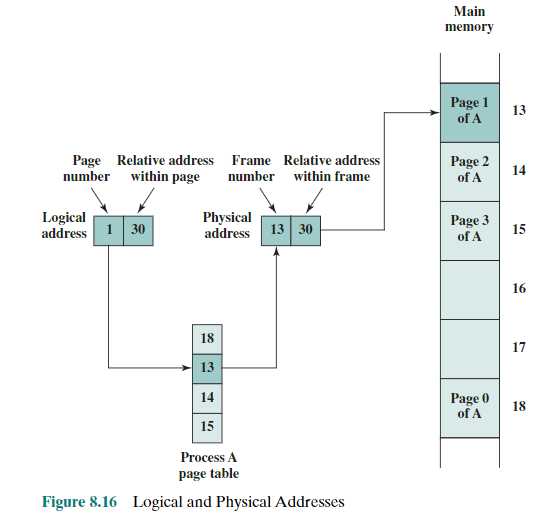When it comes time to load this process, the OS finds four free frames and loads the
four pages of the process A into the four frames.
Now suppose, as in this example, that there are not sufficient unused con-
tiguous frames to hold the process. Does this prevent the OS from loading A?
The answer is no, because we can once again use the concept of logical address. A
simple base address will no longer suffice. Rather, the OS maintains a
page table
for each process. The page table shows the frame location for each page of the
process. Within the program, each logical address consists of a page number and
a relative address within the page. Recall that in the case of simple partitioning, a
logical address is the location of a word relative to the beginning of the program;
the processor translates that into a physical address. With paging, the logical-
to-physical address translation is still done by processor hardware. The processor
must know how to access the page table of the current process. Presented with a
logical address (page number, relative address), the processor uses the page table
to produce a physical address (frame number, relative address). An example is
shown in Figure 8.16.
This approach solves the problems raised earlier. Main memory is divided
into many small equal-size frames. Each process is divided into frame-size pages:
smaller processes require fewer pages, larger processes require more. When a
process is brought in, its pages are loaded into available frames, and a page table
is set up.

